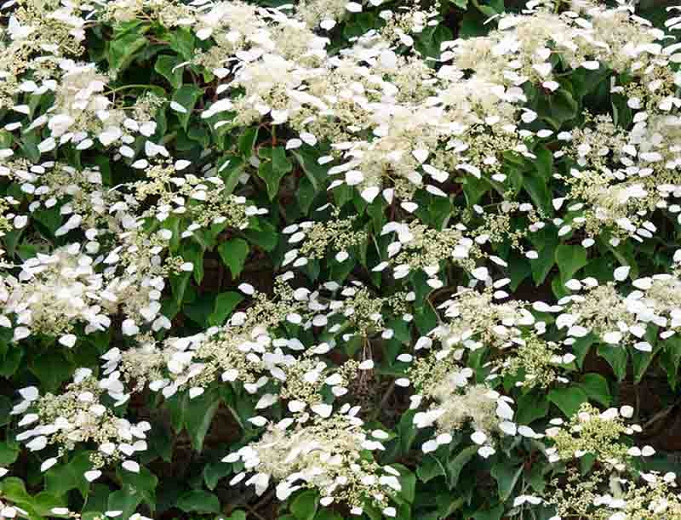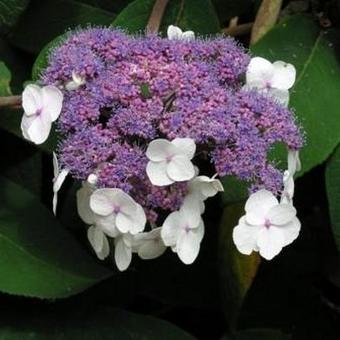The Easy Way To Grow Hydrangea Anomala
The Easy Way to Grow Hydrangea Anomala
Hydrangea anomala, also known as climbing hydrangea, is a beautiful and versatile plant that can be grown in a variety of settings. It is a deciduous vine that can grow up to 60 feet tall, and it produces large, showy flowers in shades of white, pink, and blue.
Climbing hydrangea is relatively easy to grow, and it is a good choice for gardeners of all skill levels. In this blog post, we will discuss the best way to grow hydrangea anomala, including choosing the right location, preparing the soil, planting, and caring for the plant.
Choosing the Right Location
Climbing hydrangea prefers partial shade, so it is important to choose a location that will receive at least 3-6 hours of sunlight per day. The plant will also do well in full shade, but it will not flower as profusely.
The soil should be rich, moist, and well-drained. If your soil is sandy or clayey, you will need to amend it with compost or other organic matter.
Preparing the Soil
Before planting, loosen the soil in the planting area to a depth of 12-18 inches. Add compost or other organic matter to the soil, and mix it in well.
Planting
Plant hydrangea anomala in the spring or fall. Space plants 5-10 feet apart. Dig a hole that is twice as wide and as deep as the root ball of the plant.
Place the plant in the hole and backfill with soil. Water the plant thoroughly.
Caring for Climbing Hydrangea
Climbing hydrangea is a relatively easy plant to care for. Water the plant regularly, especially during hot, dry weather. Mulch around the plant to help keep the soil moist.
Fertilize the plant in the spring with a balanced fertilizer. You can also fertilize the plant in the fall, but use a fertilizer that is lower in nitrogen.
Pests and Diseases
Climbing hydrangea is generally pest- and disease-free. However, it can be susceptible to aphids, scale, and powdery mildew. If you see any pests or diseases, treat them immediately.
Deadheading
To encourage repeat flowering, deadhead spent flowers throughout the summer. This will help the plant to produce more flowers.
Winter Protection
In cold climates, climbing hydrangea may need some winter protection. If you live in an area with cold winters, you can mound soil around the base of the plant to protect it from the cold. You can also cover the plant with a burlap sack or other protective material.
Conclusion
Climbing hydrangea is a beautiful and versatile plant that can add a touch of elegance to any garden. With proper care, it will thrive for many years to come.
Hydrangea anomala, also known as the oakleaf hydrangea, is a beautiful and versatile shrub that can be grown in a variety of settings. It is native to eastern Asia, but it is now grown in gardens all over the world.
Oakleaf hydrangeas are known for their large, showy flowers that bloom in shades of white, pink, blue, or purple. The flowers can be up to 12 inches in diameter, and they make a stunning display in the garden.
In addition to their beautiful flowers, oakleaf hydrangeas are also relatively easy to care for. They prefer full sun to partial shade, and they need well-drained soil. They are also relatively drought-tolerant once they are established.
If you are interested in learning more about oakleaf hydrangeas, I recommend visiting . This website has a wealth of information about the plant, including its history, care requirements, and varieties.
FAQ of hydrangea anomala
Q: What is hydrangea anomala?
A: Hydrangea anomala is a species of hydrangea native to eastern Asia. It is a deciduous shrub that can grow up to 10 feet tall. Hydrangea anomala is known for its beautiful flowers, which can be white, pink, or blue.
Q: What are the different types of hydrangea anomala?
A: There are two main types of hydrangea anomala: climbing hydrangea (Hydrangea anomala subsp. petiolaris) and oakleaf hydrangea (Hydrangea anomala subsp. sargentiana). Climbing hydrangea is a vine that can climb up to 30 feet tall. Oakleaf hydrangea is a shrub that has leaves that resemble oak leaves.
Q: How do I care for hydrangea anomala?
A: Hydrangea anomala is a relatively easy plant to care for. It prefers full sun to partial shade and moist, well-drained soil. Hydrangea anomala should be watered regularly, especially during hot, dry weather. In the fall, you can add a layer of mulch around the plant to help retain moisture.
Q: What are some common problems with hydrangea anomala?
A: Some common problems with hydrangea anomala include:
- Leaf spot: This is a fungal disease that can cause leaves to develop brown spots.
- Powdery mildew: This is a fungal disease that can cause leaves to develop a white powdery coating.
- Aphids: These small insects can suck the sap from leaves, causing them to wilt and yellow.
Q: How do I prevent problems with hydrangea anomala?
A: You can prevent problems with hydrangea anomala by:
- Planting the plant in a location that gets full sun to partial shade.
- Watering the plant regularly, especially during hot, dry weather.
- Adding a layer of mulch around the plant to help retain moisture.
- Pruning the plant in the spring to remove dead, diseased, or damaged branches.
- Monitoring the plant for signs of pests or diseases.
Image of hydrangea anomala
5 different images of "hydrangea anomala" from Pinterest:
- Hydrangea anomala petiolaris, also known as climbing hydrangea, is a deciduous vine that can grow up to 30 feet long. It has large, white flowers that bloom in summer.

- Hydrangea anomala ssp. sargentiana, also known as Sargent's hydrangea, is a shrub that can grow up to 10 feet tall. It has large, blue flowers that bloom in summer.

- Hydrangea anomala var. villosa, also known as hairy hydrangea, is a shrub that can grow up to 6 feet tall. It has small, white flowers that bloom in summer.
- Hydrangea anomala subsp. petiolaris 'Praecox', also known as early climbing hydrangea, is a variety of climbing hydrangea that blooms earlier in the season than other varieties.
/assets/plants/plant_24923/plant_24923_shoot_20211101154133.png)
- Hydrangea anomala 'Serrata', also known as serrated-leaf hydrangea, is a shrub that has serrated leaves and large, blue flowers.


Post a Comment for "The Easy Way To Grow Hydrangea Anomala"